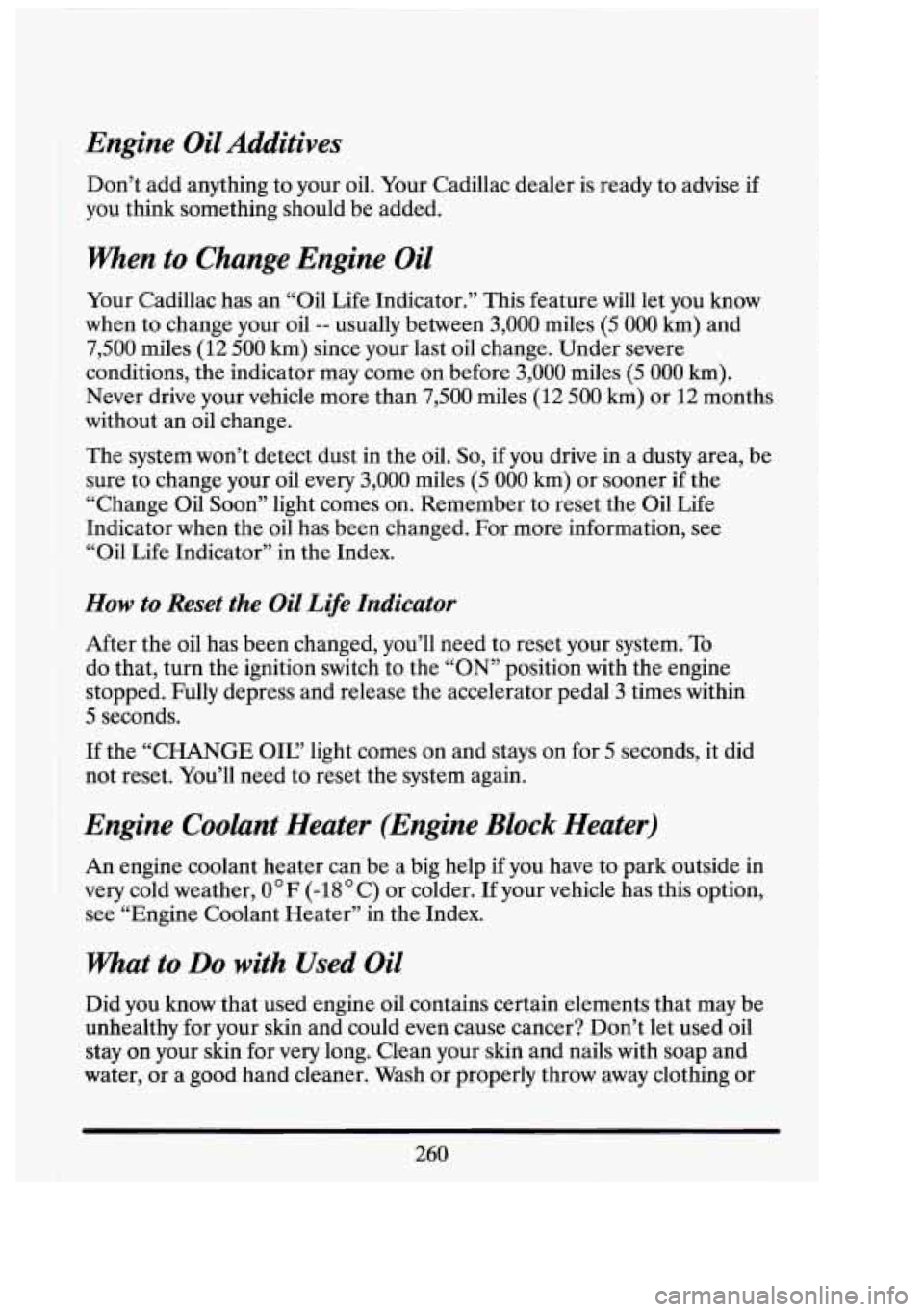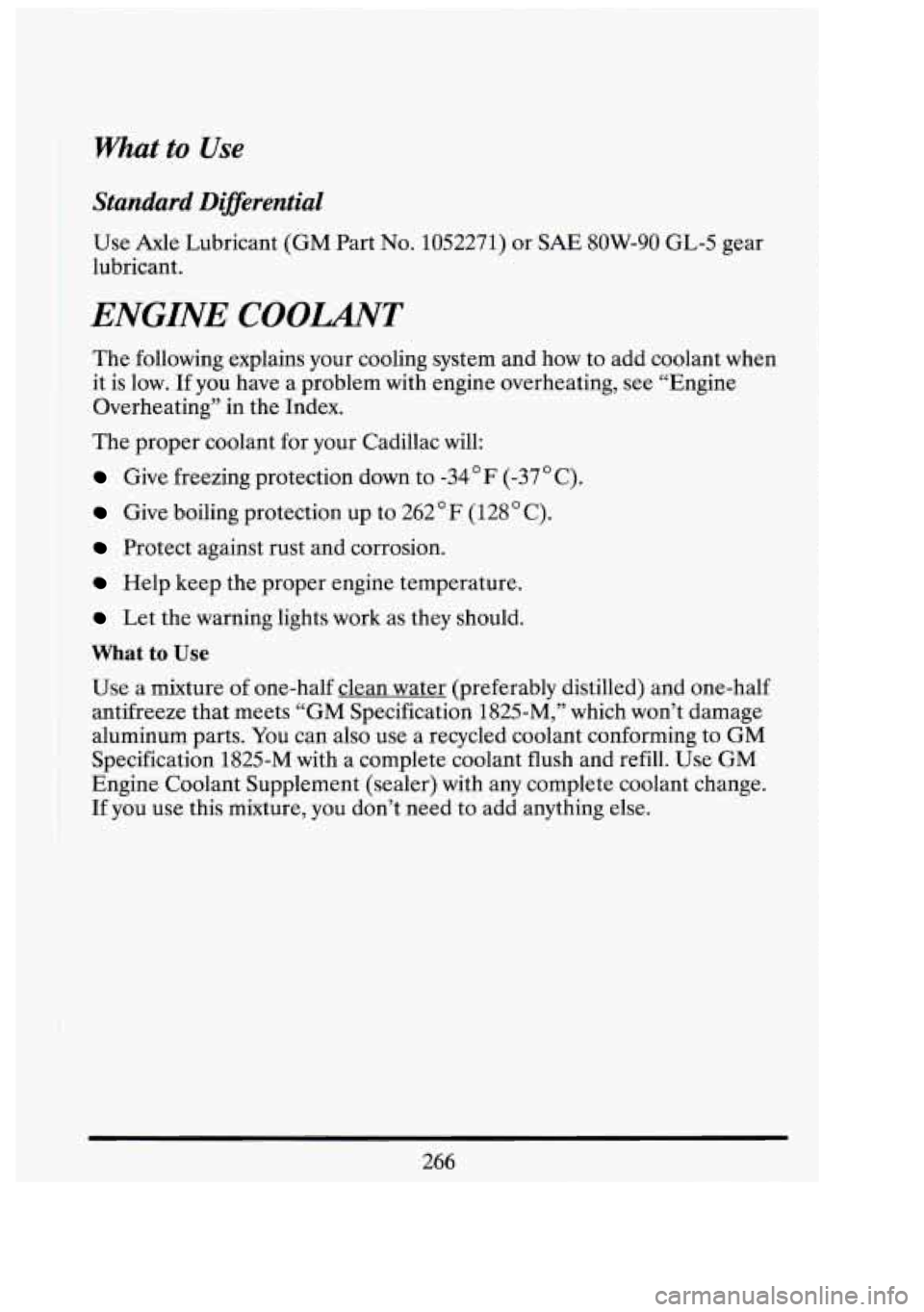Page 240 of 398
r_ How to Add Coolant to the Coolant Surge Tank
If you haven’t found a problem yet, but the coolant level isn’t visible
inside the surge tank add a
50/50 mixture of clean water (preferably
distilled) and a proper antifreeze at the coolant surge tank, but be sure
the cooling system, including the coolant surge tank pressure cap, is cool
before you do it. (See “Engine Coolant” in the Index for more
information about the proper coolant mix.)
227
Page 241 of 398
L
NOTICE:
In cold weather, water can freeze and crack the engine, radiator, \
heater core and other parts.
So use the recommended coolant.
3)
n'
-- I
228
Page 242 of 398
1. You can remove the coolant surge tank pressure cap when the cooling
system, including the coolant surge tank pressure cap and upper
radiator hose, is
no longer hot.
Turn the pressure cap
slowly about
one-quarter turn to
I the left and then stop.
-
~
If you hear a hiss, wait for that to stop. A hiss means there is still some
pressure left.
2. Then keep turning the pressure cap slowly, and remove it.
3. Fill the coolant
surge tank with
the proper
mix, up
to the base of the
filler neck.
Page 243 of 398
I
4. With the coolant
surge tank
pressure cap off,
start the engine
and let it run until
you can feel the
upper radiator
hose getting hot.
Watch out
for the
engine fan(
s).
By this time, the coolant level inside the coolant surge tank may be
lower.
If the level is lower, add more of the proper mix to the coolant
surge tank until the level reaches
5. Then replace the
pressure cap. Be
sure the pressure
cap is tight.
230
Ll
n
i$ ,
I
3;
I
Page 273 of 398

Engine Oil Additives
Don’t add anything to your oil. Your Cadillac dealer is ready to advise if
you think something should be added.
When to Change Engine Oil
Your Cadillac has an “Oil Life Indicator.” This feature will let you know
when to change your oil
-- usually between 3,000 miles (5 000 km) and
7,500 miles (12 500 km) since your last oil change. Under severe
conditions, the indicator may come on before
3,000 miles (5 000 km).
Never drive your vehicle more than 7,500 miles (12 500 km) or 12 months
without an oil change.
The system won’t detect dust
in the oil. So, if you drive in a dusty area, be
sure to change your oil every 3,000 miles
(5 000 km) or sooner if the
“Change Oil Soon” light comes on. Remember to reset the Oil Life
Indicator when the oil has been changed. For more information, see
“Oil Life Indicator” in the Index.
How to Reset the Oil Life Indicator
After the oil has been changed, you’ll need to reset your system. To
do that, turn the ignition switch to the “ON” position with the engine
stopped. Fully depress and release the accelerator pedal
3 times within
5 seconds.
If the “CHANGE OIC’ light comes on and stays on for 5 seconds, it did
not reset. You’ll need to reset the system again.
Engine Coolant Heater (Engine Block Heater)
An engine coolant heater can’be a big help if you have to park outside in
very cold weather,
0 F (-18 C) or colder. If your vehicle has this option,
see “Engine Coolant Heater” in the Index.
What to Do with Used Oil
Did you know that used engine oil contains certain elements that may be
unhealthy for your skin and could even cause cancer? Don’t let used oil
stay
on your skin for very long. Clean your skin and nails with soap and
water, or a good hand cleaner. Wash or properly throw away clothing or
-1
c:
I 3‘
260
Page 279 of 398

What to Use
Standard Differential
Use Axle Lubricant (GM Part No. 1052271) or SAE 8OW-90 GL-5 gear
lubricant.
ENGINE COOLANT
The following explains your cooling system and how to add coolant when
it is low. If you have a problem with engine overheating, see “Engine
Overheating” in the Index.
The proper coolant for your Cadillac
will:
Give freezing protection down to -34 F (-37 C).
Give boiling protection up to 262 F (128 C).
Protect against rust and corrosion.
Help keep the proper engine temperature.
I Let the warning lights work as they should.
1 What to Use
Use a mixture of one-half clean water (preferably distilled) and one-half
antifreeze that meets “GM Specification 1825-M,” which won’t damage
aluminum parts.
You can also use a recycled coolant conforming to GM
Specification 1825-M with a complete coolant flush and refill. Use GM
Engine Coolant Supplement (sealer) with any complete coolant change.
If you use this mixture, you don’t need to add anything else.
c
I
I
31
Page 281 of 398
Adding Coolant
Your cooling system when hot is under a lot of pressure. If the “LOW
COOLANT” light should appear, you need to add coolant. If it doesn’t
the coolant
is at the proper fill level.
To Check Coolant
When your engine is cold, the coolant level should be at the base of the
filler neck.
To Add Coolant
If you need more coolant, add the proper mix at the surge tank, but only
when the engine is cool.
- I
dl
268
Page 282 of 398
When replacing the pressure cap, make sure it is tight.
SURGE TANK PRESSURE CAP
NOTICE:
Your surge tank cap is a 15 psi (105 kPa) pressure-type cap and
must be tightly installed to prevent coolant loss and possible
engine damage from overheating. Be sure the arrows on the cap \
line up with the
overflow tube on the radiator filler neck.
When you replace your surge tank pressure cap, an GM cap is
recommended.
THERMOSTAT
Engine coolant temperature is controlled by a thermostat in the engine
coolant system. The thermostat stops the
flow of coolant through the
radiator until the coolant reaches a preset temperature.
When you replace your thermostat, an
AC@ thermostat is recommended.
269